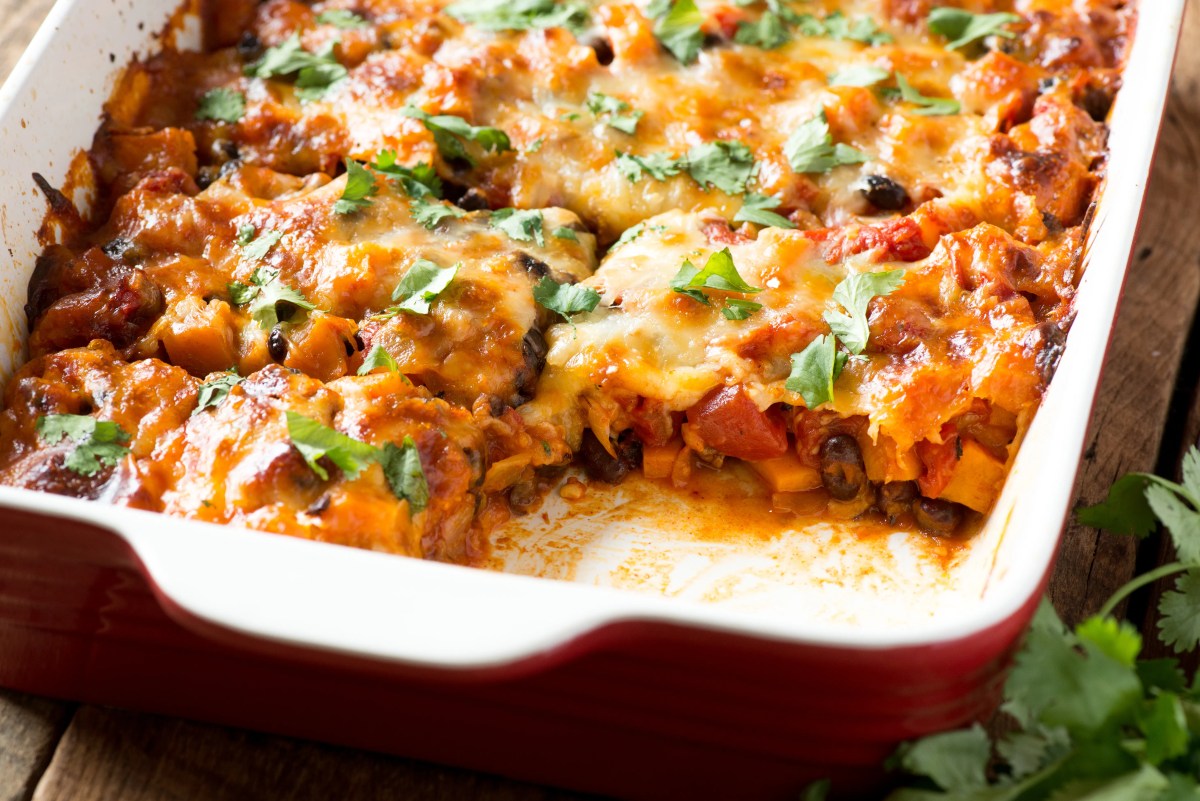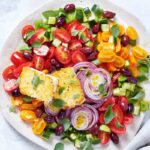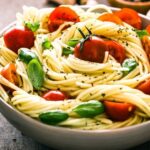Dive into a world of warmth and flavor with our exploration of comforting vegetarian casseroles. These aren’t your grandma’s limp vegetable dishes; we’re talking vibrant, richly textured creations bursting with diverse vegetable combinations and exciting flavor profiles. From creamy cheese-laden delights to hearty, plant-powered masterpieces, we’ll guide you through a range of recipes designed to please even the most discerning palate. Prepare to discover the magic of perfectly balanced sweet, savory, and acidic elements, creating casseroles that are as visually stunning as they are delicious. Learn to adapt recipes to suit various dietary needs, from gluten-free and dairy-free to vegan options, ensuring everyone at your table can enjoy the comforting goodness.
This comprehensive guide delves into the art of crafting vegetarian casseroles, offering detailed step-by-step instructions, ingredient substitution tips, and expert advice on optimizing cooking times and temperatures for perfect results every time. We’ll explore creative presentation ideas, suggesting visually appealing garnishes and plating techniques to elevate your culinary creations to the next level. Beyond the recipes themselves, we’ll cover essential aspects such as reheating leftovers and meal prepping strategies, making these casseroles a versatile addition to your weekly menu.
Recipe Variations

Vegetarian casseroles offer a wonderfully versatile canvas for culinary creativity. By thoughtfully combining vegetables, cheeses, and grains, you can craft comforting and flavorful dishes that cater to a wide range of palates. The following recipes demonstrate the exciting possibilities.
Five Diverse Vegetarian Casserole Recipes
Exploring diverse vegetable combinations and flavor profiles is key to creating exciting vegetarian casseroles. Each recipe below showcases a unique blend of ingredients and cooking techniques, resulting in a distinctive taste and texture.
- Mediterranean Quinoa Casserole: This vibrant casserole features fluffy quinoa, roasted vegetables like zucchini, bell peppers, and red onion, tossed with Kalamata olives, crumbled feta cheese, and a lemon-herb dressing. The vibrant colors of the vegetables create a visually appealing dish, while the feta provides a salty, tangy counterpoint to the sweetness of the roasted vegetables. The quinoa adds a hearty texture and a subtle nutty flavor.
- Creamy Spinach and Artichoke Casserole: A classic comfort food, this casserole combines tender spinach, marinated artichoke hearts, and a rich, creamy sauce made with ricotta cheese, parmesan cheese, and a touch of garlic. The vibrant green of the spinach contrasts beautifully with the pale green of the artichoke hearts, creating a visually appealing dish. The creamy texture of the ricotta and the sharp bite of the parmesan create a balanced flavor profile.
- Roasted Sweet Potato and Black Bean Casserole: This hearty casserole features roasted sweet potatoes, black beans, corn, and a smoky chipotle pepper sauce. The sweet potatoes provide a natural sweetness that balances the earthiness of the black beans and the subtle heat of the chipotle peppers. The vibrant orange of the sweet potatoes against the deep brown of the black beans is visually appealing.
- Mushroom and Gruyere Casserole with Wild Rice: Earthy mushrooms, nutty wild rice, and nutty Gruyere cheese combine in this elegant casserole. The mushrooms are sautéed until tender, then mixed with the wild rice and a creamy sauce made with Gruyere, white wine, and thyme. The earthy flavors of the mushrooms and wild rice are complemented by the rich, nutty flavor of the Gruyere cheese.
- Butternut Squash and Kale Casserole with Goat Cheese: This autumnal casserole features roasted butternut squash, sautéed kale, and creamy goat cheese. The sweetness of the butternut squash pairs perfectly with the slight bitterness of the kale and the tangy, creamy goat cheese. The vibrant orange of the butternut squash and the deep green of the kale create a visually stunning contrast.
Three Cheese-Focused Vegetarian Casseroles
The choice of cheese significantly impacts the texture and taste of a vegetarian casserole. These recipes highlight the unique contribution of different cheeses.
- Monterey Jack and Corn Casserole: This casserole features sweet corn, diced bell peppers, and a blend of Monterey Jack cheese, known for its mild, creamy flavor and melting properties. The cheese creates a smooth, creamy texture, while the corn and peppers provide a sweet and slightly spicy counterpoint.
- Cheddar and Broccoli Casserole with Breadcrumbs: Sharp cheddar cheese provides a bold, tangy flavor to this classic casserole, complemented by the slightly bitter broccoli florets and crunchy breadcrumbs. The cheddar melts beautifully, creating a rich and flavorful sauce. The breadcrumbs add a satisfying textural contrast.
- Four-Cheese Mac and Cheese Casserole: This indulgent casserole features a blend of four cheeses – sharp cheddar, creamy Gruyere, nutty Parmesan, and smoky Gouda – for a complex and layered flavor profile. The combination of cheeses creates a rich and decadent sauce that coats the pasta perfectly.
Nutritional Comparison of Vegetarian Casseroles
This table provides an approximate nutritional comparison of the five casserole recipes, highlighting calories, protein, and fiber content per serving. Note that these are estimates and can vary based on specific ingredients and portion sizes.
| Casserole | Calories (approx.) | Protein (approx. grams) | Fiber (approx. grams) |
|---|---|---|---|
| Mediterranean Quinoa | 350 | 15 | 8 |
| Spinach and Artichoke | 400 | 12 | 6 |
| Sweet Potato and Black Bean | 380 | 18 | 10 |
| Mushroom and Gruyere | 450 | 14 | 7 |
| Butternut Squash and Kale | 320 | 10 | 9 |
Step-by-Step Cooking Instructions
This section provides a detailed guide for preparing a hearty and flavorful vegetarian butternut squash and black bean casserole. We’ll walk you through each step, from prepping the ingredients to achieving that perfect bubbly, golden-brown top. We will also explore ingredient substitutions and adjustments for different ovens and dish sizes.
Butternut Squash and Black Bean Casserole Preparation
This recipe yields a rich and satisfying casserole, perfect for a weeknight dinner or a special occasion. The vibrant orange butternut squash complements the earthy black beans, creating a visually appealing and delicious dish.
- Preparing the Butternut Squash: Begin by preheating your oven to 400°F (200°C). A picture would show a neatly organized workspace with a whole butternut squash, a peeler, and a cutting board. The squash is halved lengthwise, seeds scooped out, and then peeled. Imagine the glossy, orange flesh gleaming under the kitchen light. Then, cube the squash into approximately 1-inch pieces. The image would show the neatly cubed squash ready for roasting.
- Roasting the Squash: Toss the cubed butternut squash with 2 tablespoons of olive oil, salt, and pepper. Spread the squash in a single layer on a baking sheet. The image would show the glistening squash pieces evenly distributed on a baking sheet, ready for the oven. Roast for 20-25 minutes, or until tender and slightly caramelized. The image would show the roasted squash, its edges slightly browned and caramelized, emitting a warm, inviting aroma.
- Sautéing the Vegetables: While the squash is roasting, finely chop one medium onion and two cloves of garlic. A picture would show the finely chopped onion and garlic, their aromas already filling the air. Sauté the onion in 1 tablespoon of olive oil until softened, about 5 minutes. Add the garlic and cook for another minute until fragrant. The image would show the translucent onion and fragrant garlic in the pan, ready for the next step.
- Assembling the Casserole: In a large bowl, combine the roasted butternut squash, sautéed onions and garlic, 1 (15-ounce) can of black beans (rinsed and drained), 1 (10-ounce) can of diced tomatoes and green chilies (undrained), and 1 cup of cooked quinoa. The image would show all the ingredients in a large bowl, ready to be combined and layered into the casserole dish. Gently stir in ½ cup of shredded cheddar cheese and ½ cup of crumbled cotija cheese. The image would highlight the colorful mixture, the cheeses adding a creamy texture and visual appeal.
- Baking the Casserole: Pour the mixture into a greased 9×13 inch baking dish. A picture would show the casserole mixture being carefully poured into a greased baking dish, creating an even layer. Top with the remaining ½ cup of cheddar cheese. The image would show the casserole dish before baking, topped with cheese, looking ready to be placed in the oven. Bake for 20-25 minutes, or until heated through and bubbly. The image would show the finished casserole, bubbling and golden-brown, emitting a warm and inviting aroma.
Ingredient Substitutions
Substituting ingredients can alter the casserole’s flavor and texture. For example, using sweet potatoes instead of butternut squash will result in a slightly sweeter and moister casserole. Replacing black beans with kidney beans will provide a similar texture but a slightly different flavor profile. Using a different type of cheese will change the overall taste and melt characteristics. For example, Monterey Jack cheese would offer a milder flavor than cheddar.
Adjusting Cooking Times and Temperatures
Cooking times and temperatures may need adjustments depending on the oven type and casserole dish size. A smaller casserole dish will require a shorter cooking time, while a larger one will require a longer time. Conventional ovens may require slightly longer cooking times compared to convection ovens. For example, a convection oven might reduce the cooking time by 5-10 minutes. Always monitor the casserole and adjust the cooking time accordingly, ensuring the internal temperature reaches 165°F (74°C). Using an oven thermometer is highly recommended for accurate temperature control.
Recipe Adaptation and Customization
Vegetarian casseroles offer a fantastic base for culinary creativity, easily adaptable to suit diverse dietary needs and preferences. By making simple substitutions and additions, you can transform a standard recipe into a delicious and inclusive meal for everyone. This section details how to modify a basic vegetarian casserole to cater to gluten-free, dairy-free, or vegan diets, and how to incorporate various grains and legumes to add nutritional value and textural variety. We’ll also explore meal prepping strategies for optimal convenience.
Adapting for Dietary Restrictions
Adapting a vegetarian casserole to accommodate gluten-free, dairy-free, or vegan diets involves careful ingredient selection. For gluten-free versions, replace any wheat-based ingredients, such as bread crumbs or flour-thickened sauces, with gluten-free alternatives. For example, gluten-free breadcrumbs can be made from almond flour, crushed nuts, or gluten-free oats. Cornstarch or arrowroot powder can serve as gluten-free thickening agents. Dairy-free adaptations are achieved by substituting dairy products like milk, cream, or cheese with plant-based alternatives. Soy milk, almond milk, coconut milk, or cashew cream work well. Nutritional yeast adds a cheesy flavor to dairy-free versions. Vegan casseroles simply require the omission of all animal products, ensuring all ingredients are plant-based. This includes using vegan butter or oil instead of butter and checking labels for hidden animal products like whey.
Incorporating Grains and Legumes
Adding grains and legumes significantly enhances the nutritional profile and texture of vegetarian casseroles. Quinoa, with its complete protein profile and delicate flavor, adds a fluffy texture and subtle nutty taste. Brown rice, offering a hearty chew, contributes to the casserole’s overall richness. Lentils, easily incorporated, provide a substantial protein boost and earthy flavor. Black beans, kidney beans, or chickpeas add a creamy texture and a satisfying bite. For example, substituting half the potatoes in a potato and vegetable casserole with cooked quinoa creates a lighter, more nutritious dish. Adding a cup of cooked lentils to a vegetable and cheese casserole increases the protein content and adds a hearty texture.
Meal Prepping Vegetarian Casseroles
Vegetarian casseroles are ideal for meal prepping due to their ease of storage and reheating. After the casserole has cooled completely, transfer it to an airtight container. This prevents spoilage and maintains freshness. Store the casserole in the refrigerator for up to four days or in the freezer for up to three months. To reheat, remove the casserole from the refrigerator or freezer and allow it to thaw completely if frozen. Reheat gently in a preheated oven at 350°F (175°C) for 20-30 minutes, or until heated through. Alternatively, microwave in covered intervals, stirring frequently to ensure even heating. Always ensure the casserole reaches a safe internal temperature of 165°F (74°C) before consumption. Properly stored and reheated, a vegetarian casserole remains a delicious and convenient meal option throughout the week.
From the initial spark of inspiration to the final, satisfying bite, creating a comforting vegetarian casserole is a journey of culinary exploration. This guide has equipped you not only with delectable recipes but also with the knowledge and confidence to adapt, customize, and personalize your creations to reflect your unique tastes and dietary preferences. Imagine the warmth of a perfectly baked casserole, its aroma filling your kitchen, a testament to your culinary skills and a promise of a truly satisfying meal. Embrace the versatility of vegetarian casseroles—a culinary canvas ready for your creative touch. Enjoy the process, savor the results, and share the comforting goodness with those you love.
Popular Questions
Can I freeze vegetarian casseroles?
Yes, many vegetarian casseroles freeze well. Allow them to cool completely before freezing in airtight containers for up to 3 months. Reheat thoroughly before serving.
What are some good side dishes to serve with vegetarian casseroles?
Simple green salads, crusty bread, roasted vegetables, or a light soup are all excellent accompaniments to vegetarian casseroles.
How can I make my vegetarian casserole more flavorful?
Experiment with different herbs, spices, and cheeses. Roasting vegetables before adding them to the casserole can also enhance their flavor.
Can I use different types of cheese in the recipes?
Absolutely! Feel free to experiment with different cheeses to find your favorite combinations. Consider the melting properties and flavor profiles when choosing your cheeses.
What if I don’t have all the ingredients listed in a recipe?
Many ingredients can be substituted. The guide provides suggestions for substitutions and their impact on the final dish. Don’t be afraid to experiment!


